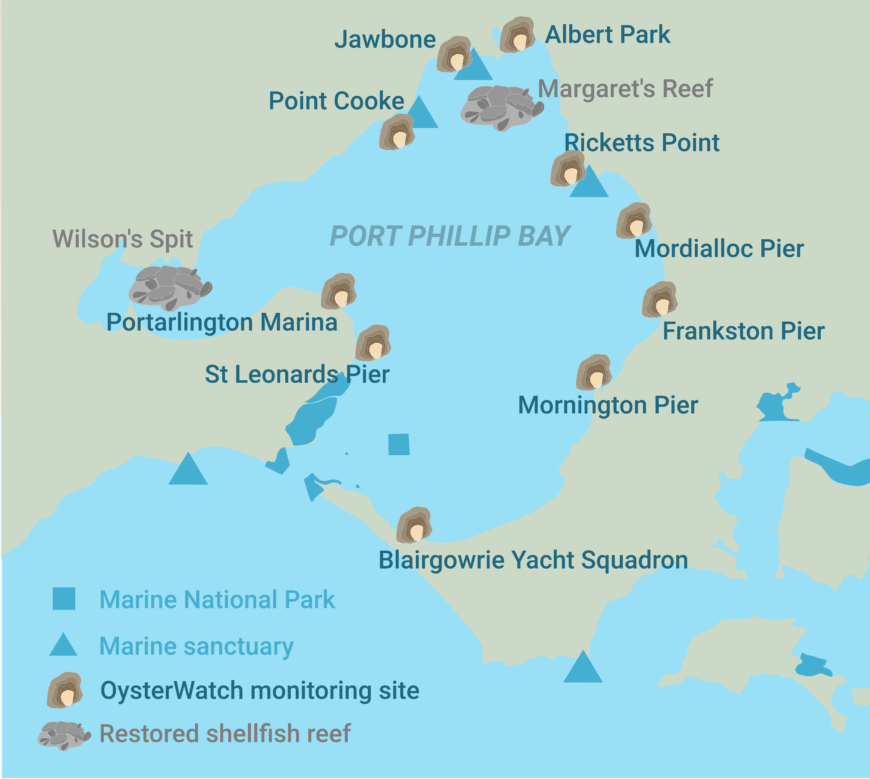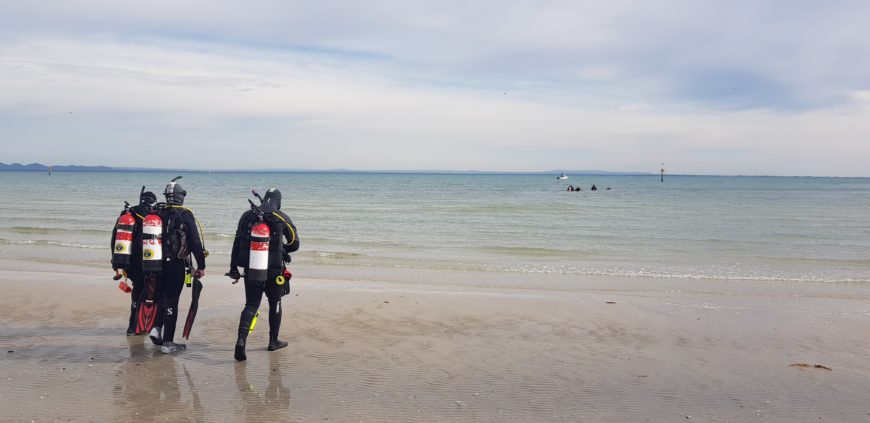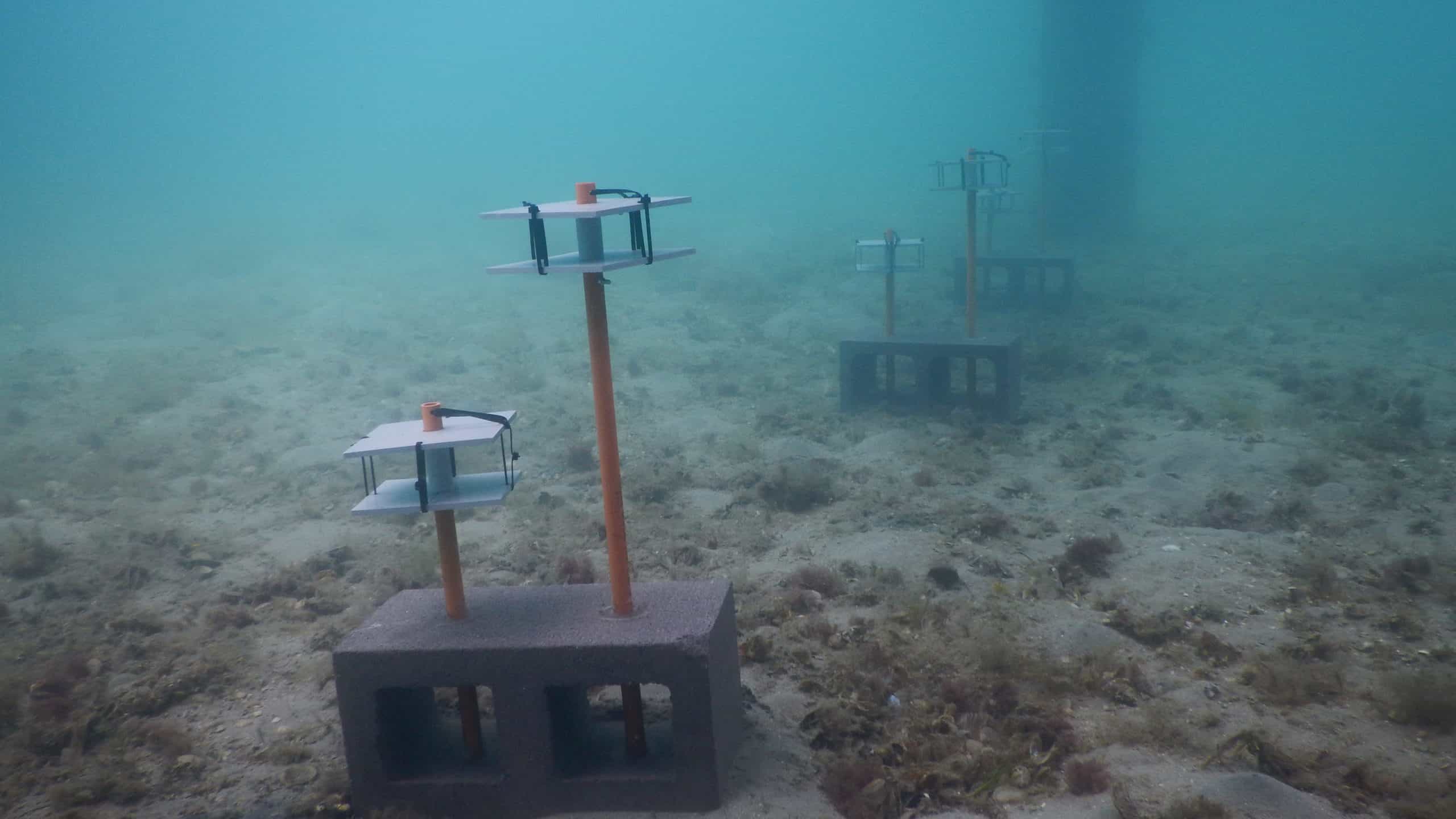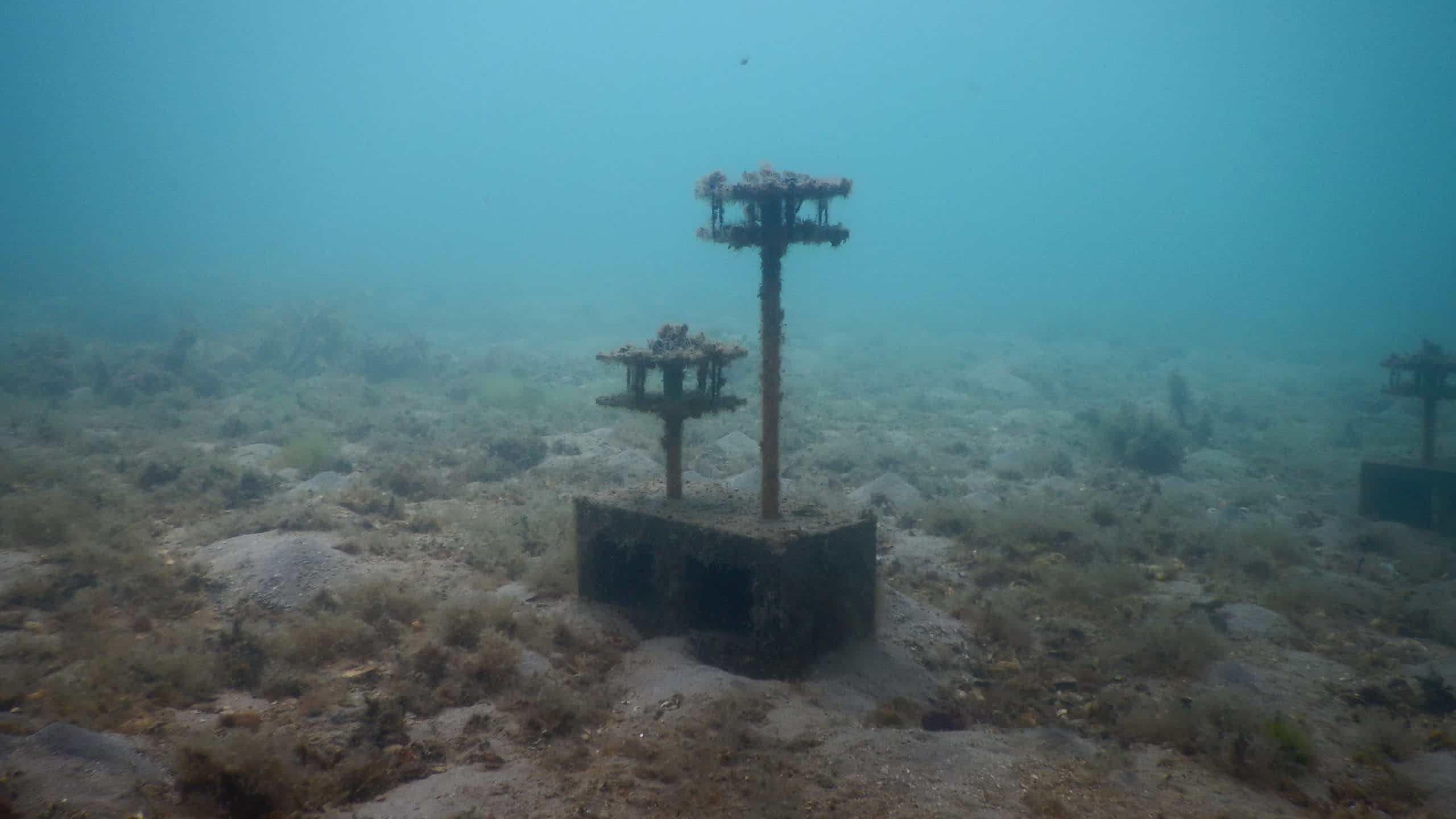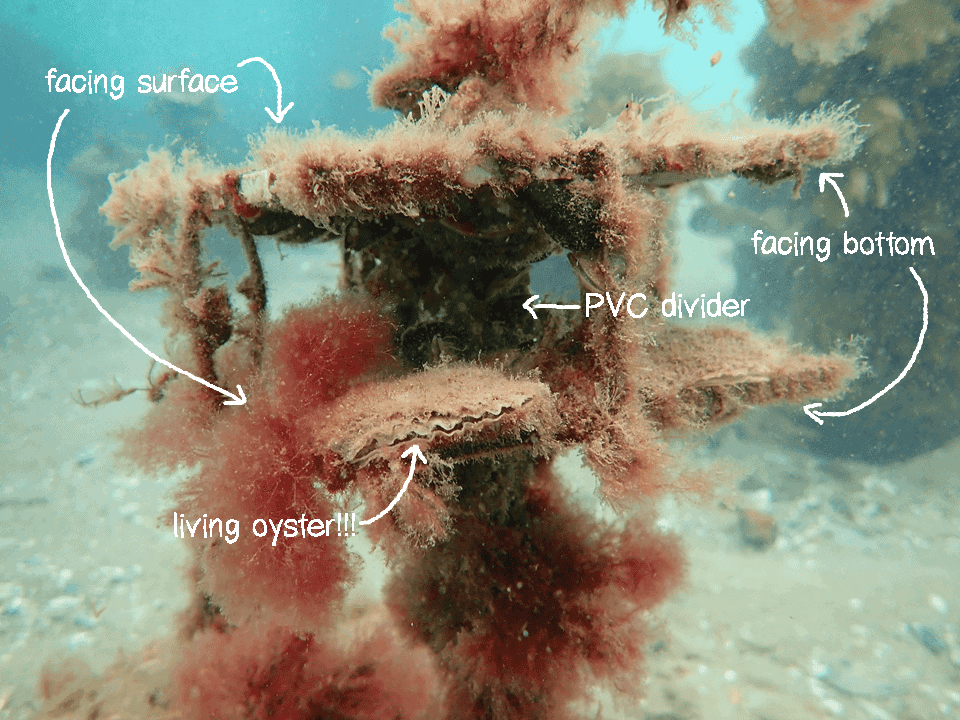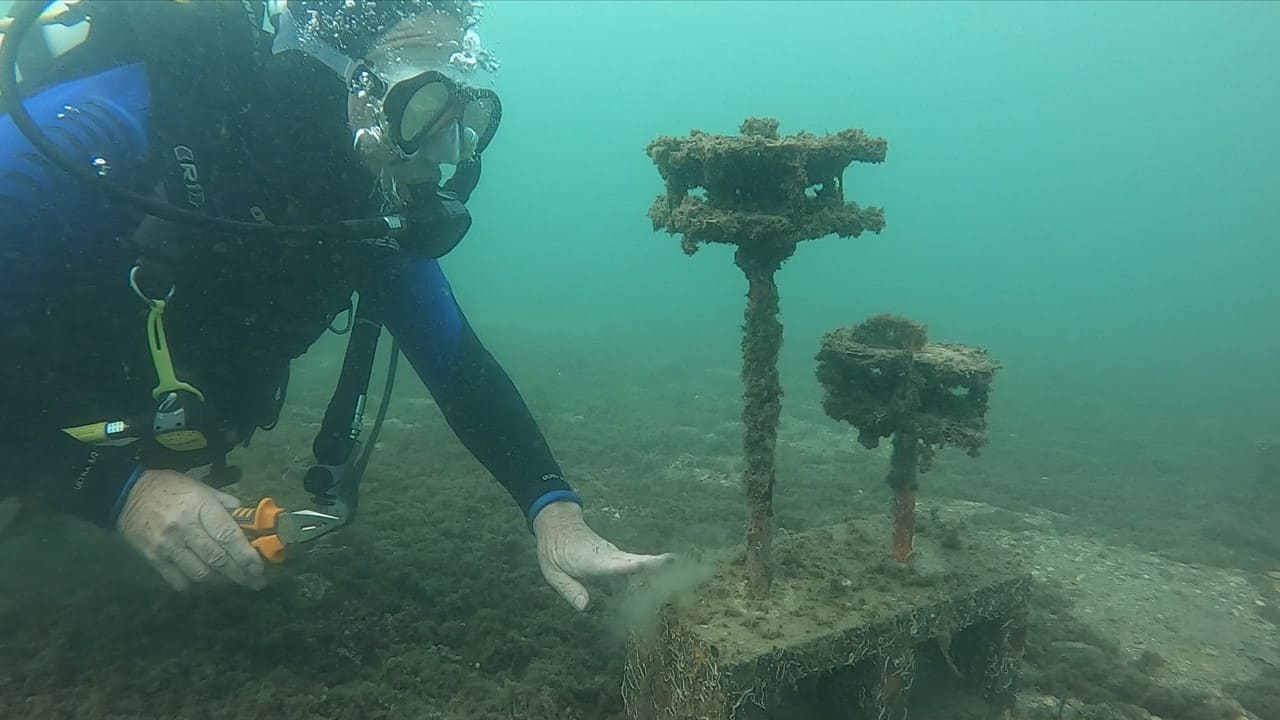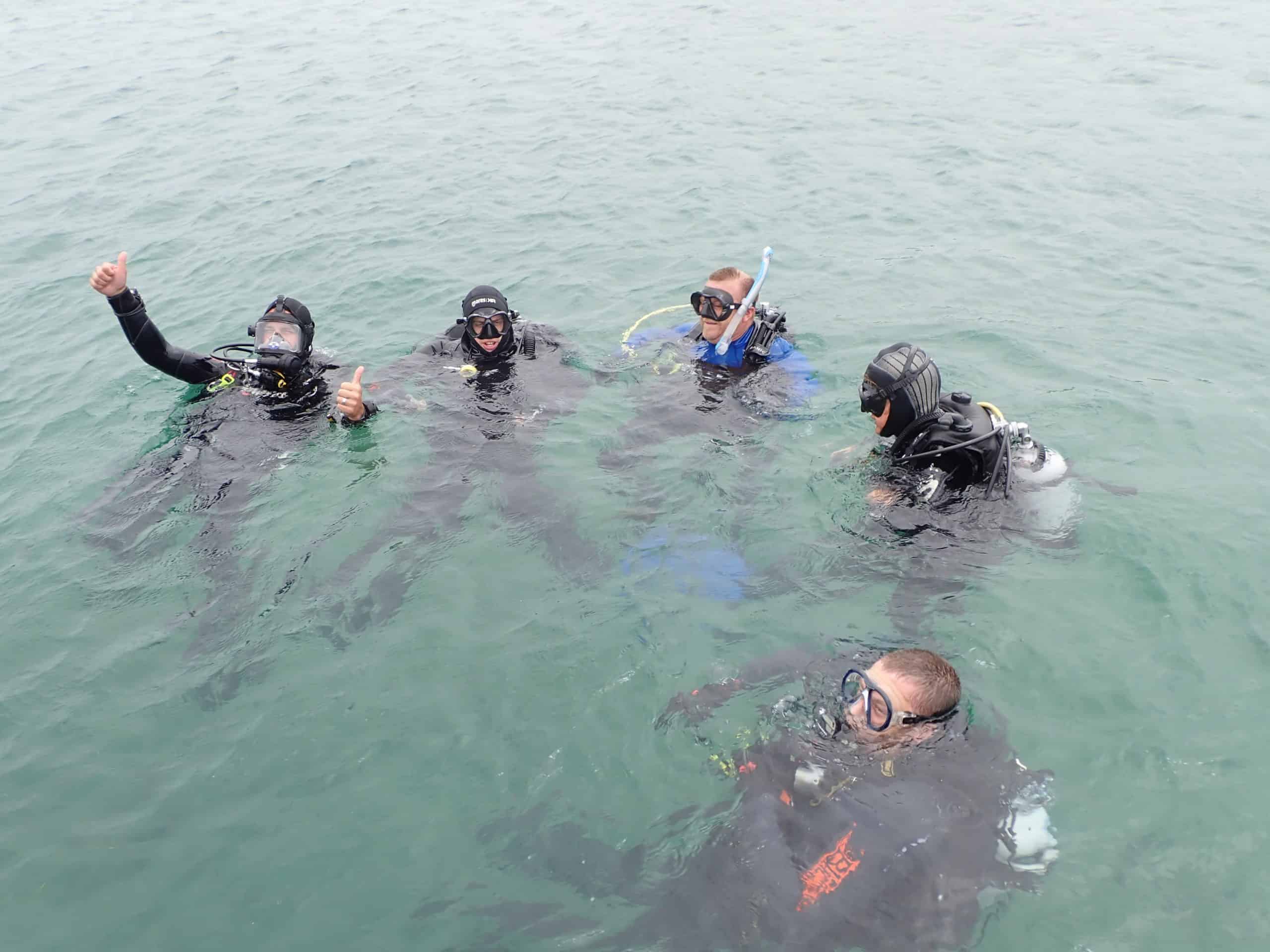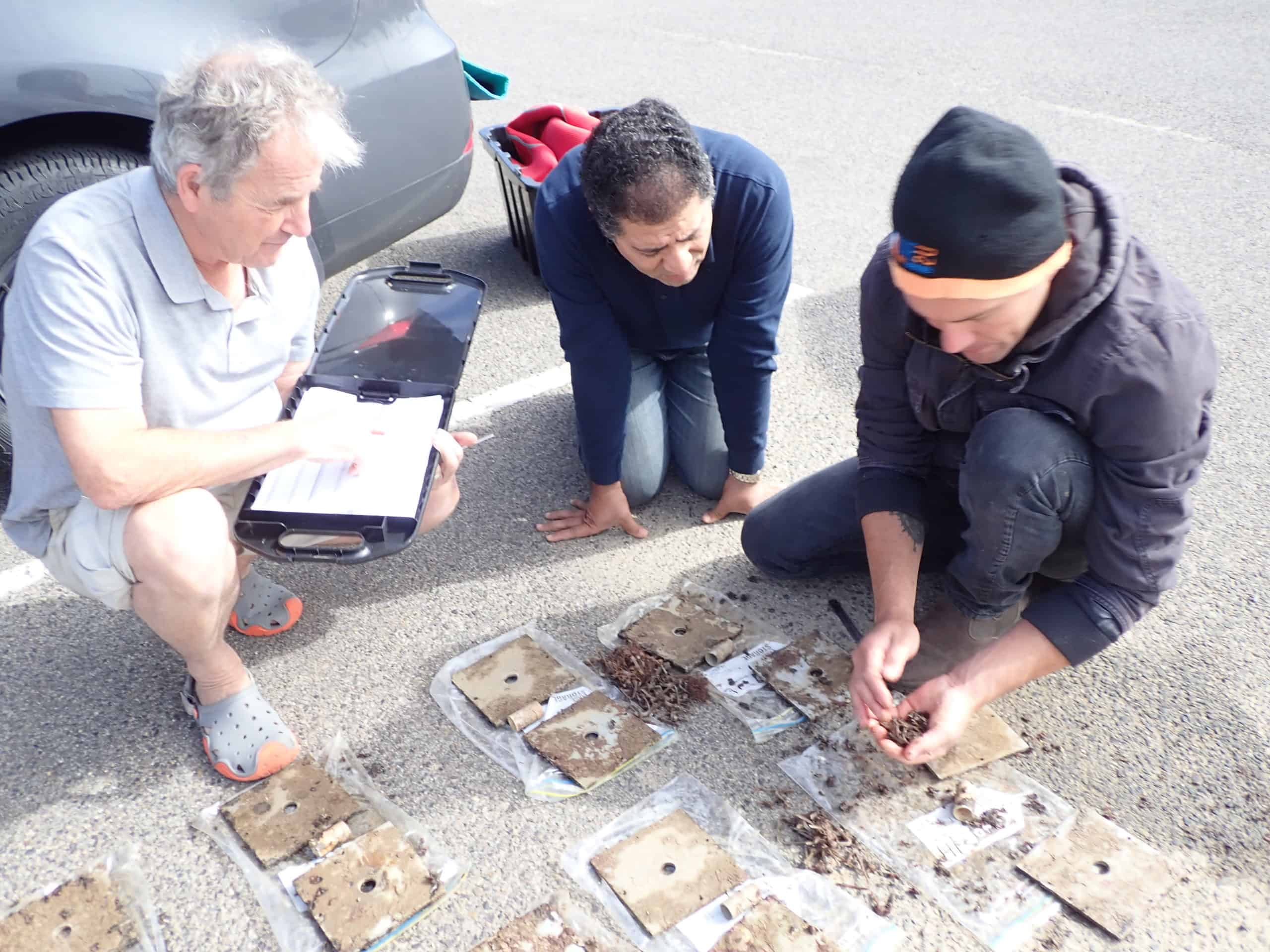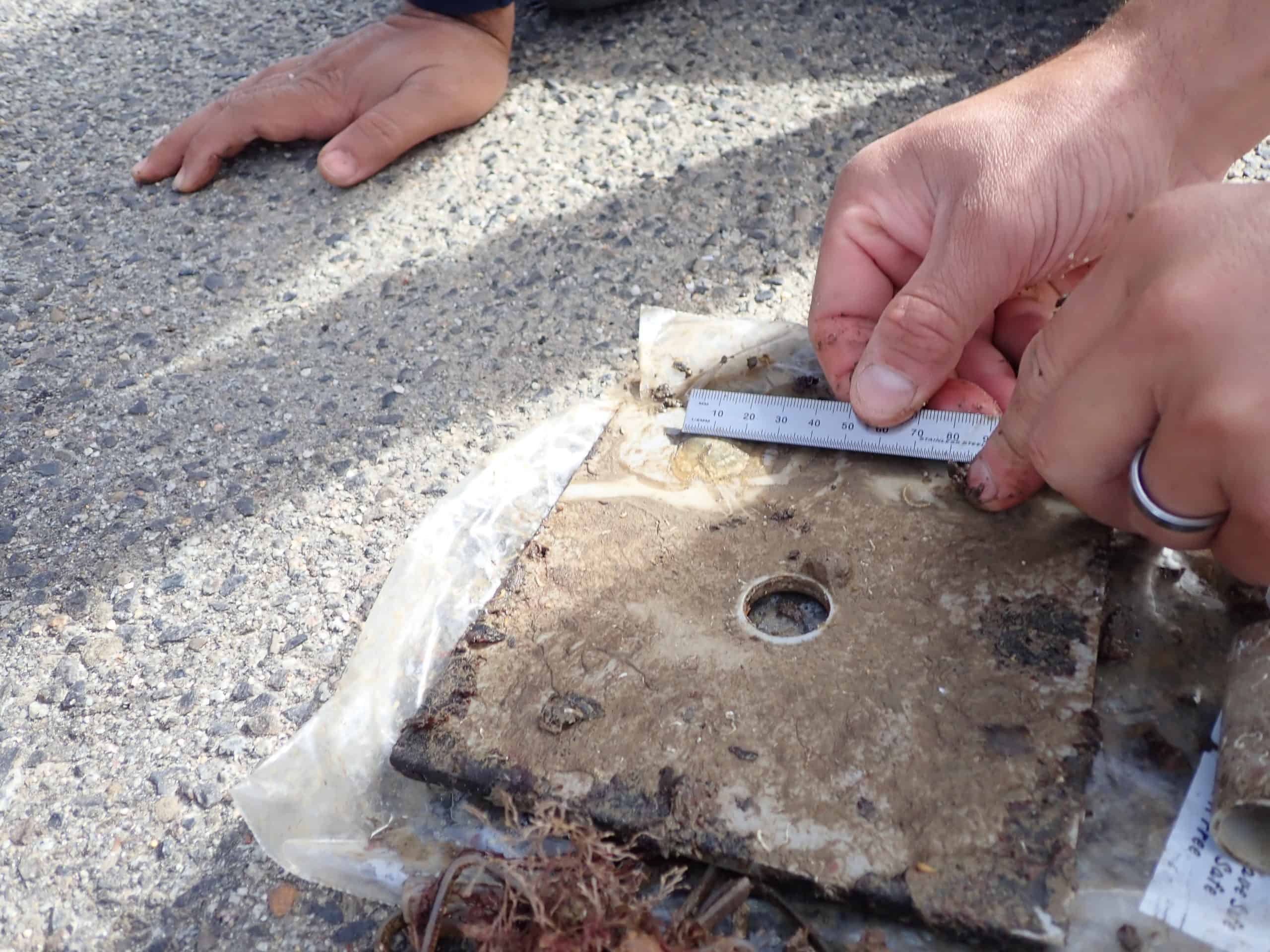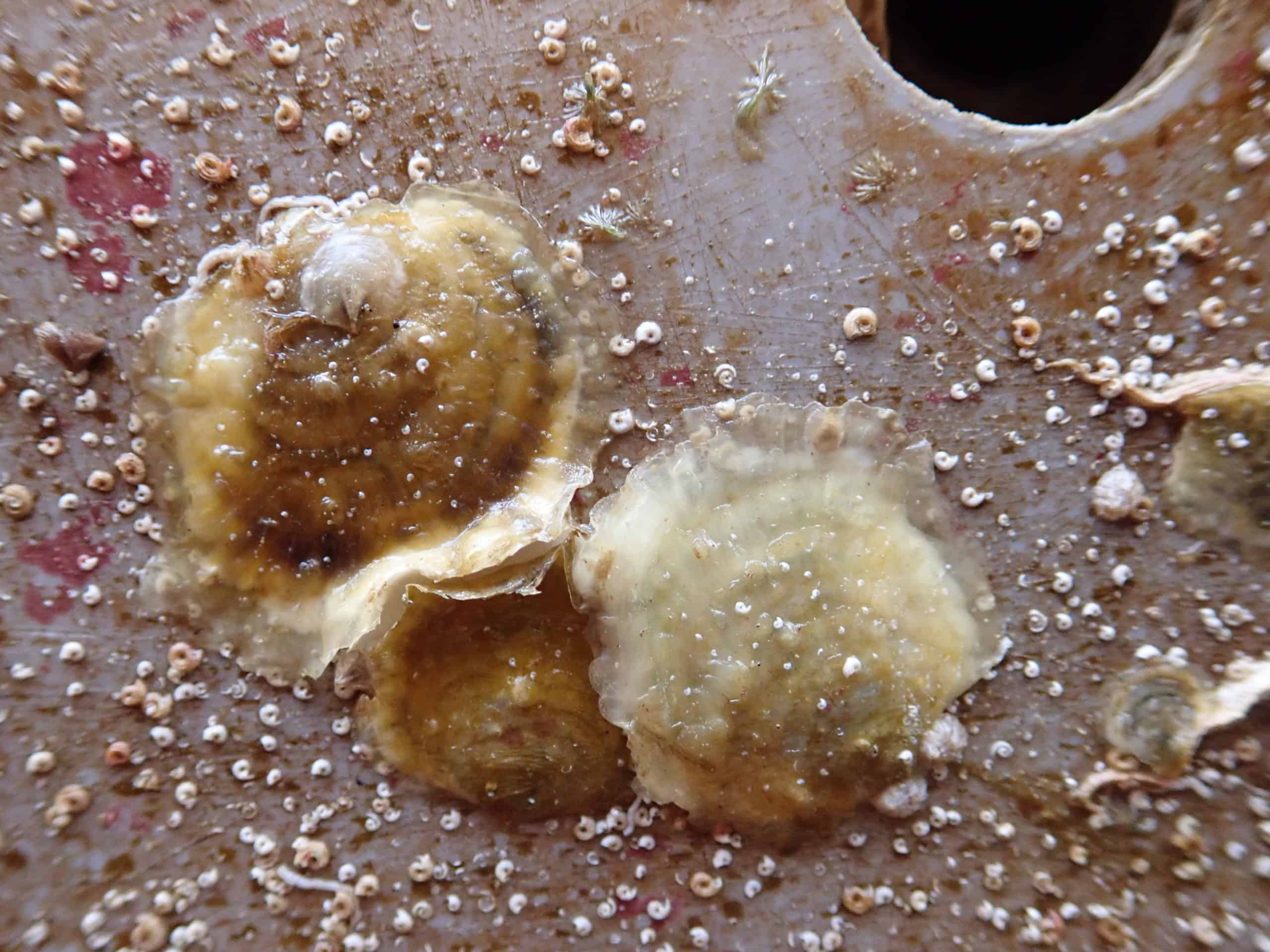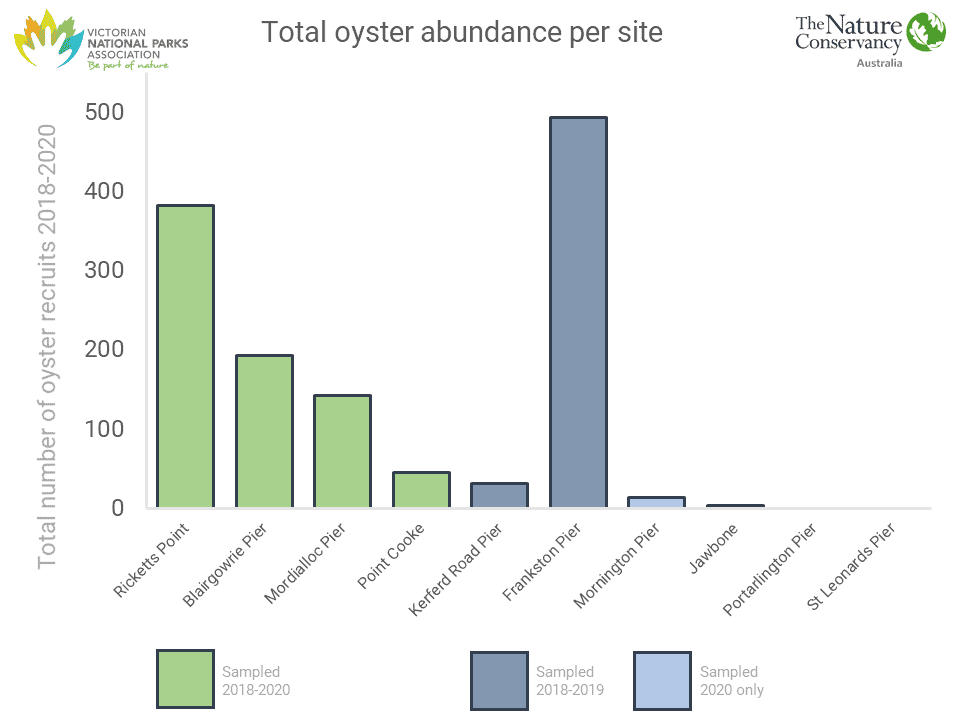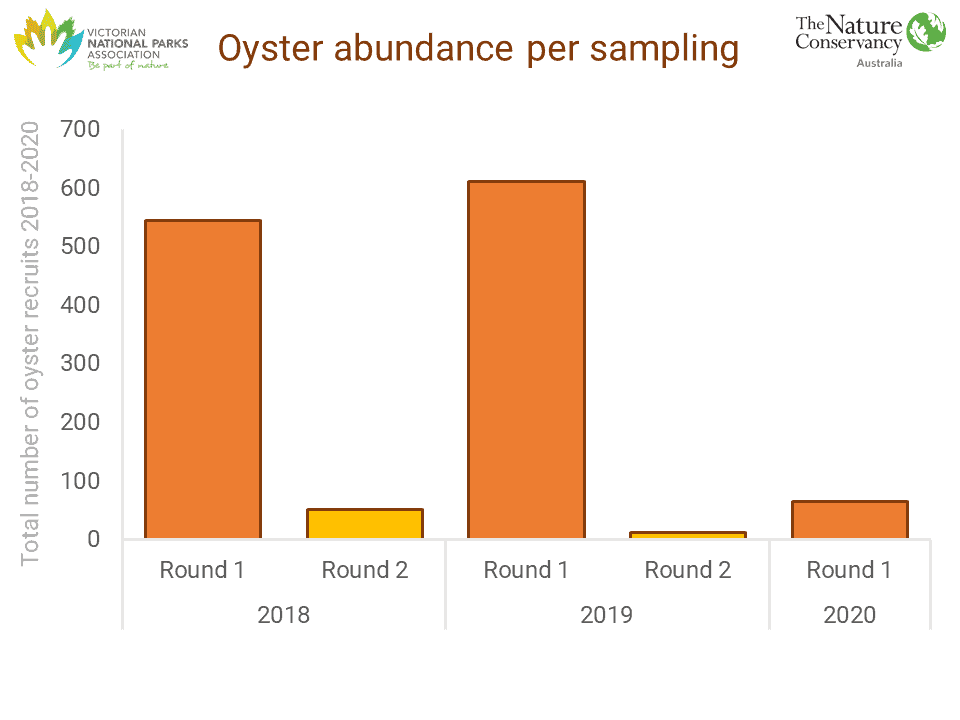Oyster and mussel reefs once covered vast areas of the seabed in Port Phillip Bay, and were an important food source for local Indigenous people. However, the reefs were decimated by European settlement and the dredging that came with it.
Patchy groups of oysters and mussels are still found in Port Phillip Bay, and the good news is that trials to restore the reefs are currently underway in two locations.
To help identify other suitable sites for reef restoration, between 2017-2020 ReefWatch monitored shellfish recruitment and survival on settlement plates with the help of its ReefWatchers.
Settlement plates can be anything in the water that larvae in the water column can settle on and survive. In our case, we used small ‘plates’ of PVC.
With settlement plates spread throughout the bay, we hoped to find ‘hot spots’ where large numbers of mussel and oyster larvae settle on them and survive. The ‘hot spots’ could then become sites for the re-establishment of the reefs.
Read more about Oyster Watch in our June 2017 Park Watch article.
